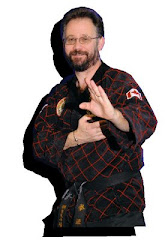To: add-holistic@mLists.net
From: "Ruth S. Hunter"
Subject: martial arts and ADD/ADHD
Date: Mon, 9 Nov 1998 07:45:23 -0600
Martial Arts and Children with ADD/ADHD
Children diagnosed with ADD/ADHD can successfully participate and benefit from martial arts classes.
One young man with ADD, now in his teens, began when he was five years old. When he was six, he wanted to compete in tournaments so he could win trophies.
And the trophies and titles added up. He has won over 215 trophies at national, regional and state tournaments. He ranked first in the nation in forms and weapons in 1992, and first in forms in 1993 and 1995.
Immediately before each competitive event, the young man prepares himself, using his own method. Right before I compete, I like to be by myself, concentrate and clear my mind, and listen to upbeat music to get my adrenaline going.
During the tournament season, he trains one-on-one with the instructor in addition to taking regular classes. He is not being singled out because he was diagnosed with ADD. Most of the serious competitors train with coaches.
Along the way, he found that karate, the martial art he studies, gives him more than trophies and titles. The biggest things karate has done has helped me with my concentration and discipline, he said.
As one martial arts instructor explained, AAttention deficit is like having 47 things coming into your mind at all times. They cannot complete the entire thought process before another comes in.
Since all sounds and movements have the same impact and nothing is filtered out, these children have a hard time staying focused.
For many affected youngsters, the martial arts has proven to be extremely successful in providing a structured, fast-paced framework which helps them learn to function and feel good about themselves. By its very format, martial arts classes help children stay on task.
In this article, I'm using the educational definition of modality which is audio/visual/kinesthetic. Martial arts are multi-sensory, combining all three modalities in classes. When introducing a new technique, the instructor will tell the class what to do, demonstrate it and often (especially in the beginning classes) perform the technique with the students. As they advance, students can be given a verbal command, such as performing their own combinations of kicks and punches across the floor. The students have to decide what to do. It's difficult for everyone, not just children with ADD/ADHD.
The structured class format helps students succeed.
Instructors must keep classes focused and disciplined in order for children with ADD/ADHD to succeed. Students stand in straight lines according to rank Thereis a specific, detailed manner with which they address upper belts and instructors The instructor usually gives concise commands and directions. Children learn what to expect and find comfort and room to grow within the structure.
The instructor provides a focus point at the front and center of the room. Children with ADD/ADHD should be positioned directly in front of the instructor and away from mirrors.
Students are constantly moving and are constantly mentally challenged in classes and in the special tests that they take to promote to another belt level. A mother of a boy with ADD and
very unexcitable found the classes stimulated him and helped him to respond to others.
Critiques. Instructors provide positive enforcement of what each child does well and gives each student something to work on. One mother of a child with ADHD, said, AThe martial arts stretched his level of concentration, and he responded very well to encouragement from the instructor. The instructor should always give constructive, positive feedback.
Students with ADD/ADHD should always be treated the same as other students. E.g., they will be assigned push-ups just like anyone else for not following certain expectations. They shouldn't be singled out or given special attention. Classes provide physical and mental learning. Students are constantly given a variety of training drills. Instructors must set individual goals for students. The goals will be kept simple, such as kicking higher or kicking faster, breaking a board, learning a new technique.
The martial arts motivates students to achieve their goals (such as attaining higher belt ranks and competing in tournaments). Instructors will talk with parents on children's progress toward
their goals. The martial arts constantly builds confidence in students. The children find they can succeed at something difficult.
Often, because of ADD or ADHD, the children are criticized or made fun of. In the martial arts, with the right school and instructor, children's self-confidence grows and transfers to arenas outside of martial arts class.
One mother watched her son's self-confidence improve when he took the forms learned in tae kwon do, put them to music and performed them in his elementary school's talent shows.
Before starting their children in the martial arts, parents should interview the owner/instructors at several martial arts schools to discover which school is more prepared to work with their children and is willing to do so. Some schools have studied ADHD, prepared appropriate teaching methods and taught all of the instructors in the school to work with these children.
Martial arts is another venue through which children can build their self-confidence and concentration skills. It supplements what parents are already doing through diet and medication.
I'd like to particularly thank Penny Duggan, master instructor at Kim's Tae Kwon Do, and Barbara Natelle, Ph.D., associate director of the Adaptive Education program at St. Norbert College.
________________________________________________________________
Master Art Mason
Founder: The Peaceful Warriors' Martial Arts Institute

No comments:
Post a Comment